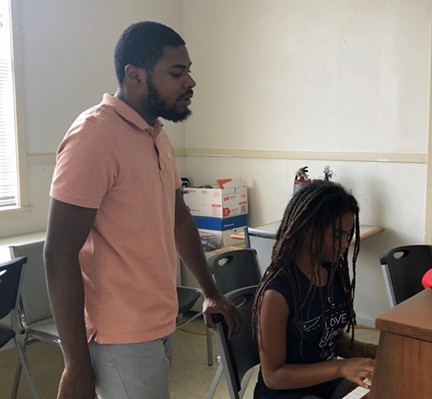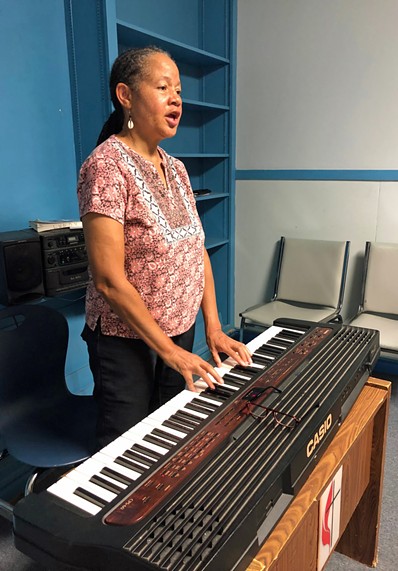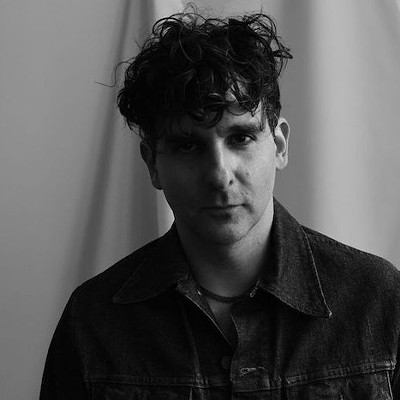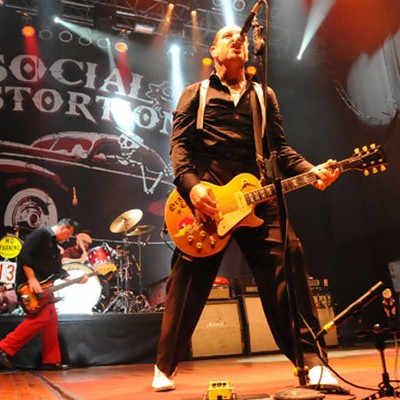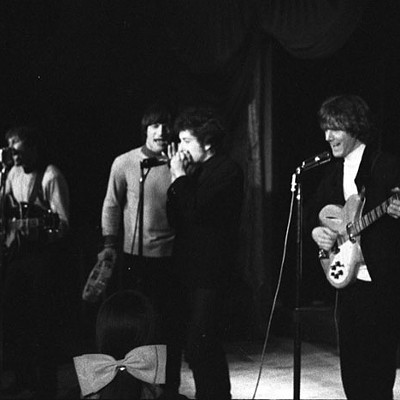It’s 9:45 on a Saturday morning at St. Mary’s United Methodist Church on Scott Street in the Third Ward, and music is coming from inside. But instead of a hymn or gospel tune that you might expect on the next day, it’s the sound of several violins cautiously playing Bach’s “Minuet and G Major,” that little ditty known to classical music lovers and brides around the world.
Tucked in a small room, Dr. Anne Lundy is instructing several pre-teen violinists as they tackle the tune with intense concentration while she guides them from behind a Casio keyboard. The children’s brows are all knitted as they hoist their instruments with one hand and glide their bows across the strings with the other.
“That’s good, that’s good. But you need to pick up the pace a little!” she says. “It’s getting better! We have to keep working on it!”
Elsewhere in St. Mary’s, young students are unpacking their instruments as instructors and parents mingle in the large center room. Everyone is gathered as they are each Saturday as part of lessons provided by the nonprofit Community Music Center of Houston, which this year is celebrating its 40th anniversary.
Dr. Lundy—herself an accomplished violinist/conductor and music instructor/researcher, is the Center’s Musical Director. It is her and the Center’s driving goal to provide musical education to students (and adults) through their programs.
And in the case of children, try and address a problem has been created by the trimming or outright dissolution of music education and dedicated music classes in public schools.
“That’s especially in HISD. I grew up there, and music is just not supported the way it should be,” she says. “And it’s a nationwide problem, but even more in large urban schools. We try to fill that gap, especially for African-American and Latino kids. And a big part is [individual] lessons.”
Growing up, Lundy says she was often “the only black kid in the orchestra,” but is thankful that her own parents pushed her to keep at music, year after year. And it’s something that she tries to convey to parents today.
“I really like to talk to parents. And I know they worry about paying for lessons and maybe their kids will take a few and lose interest. But people tell me all the time they wish they could play an instrument and should have stuck with lessons. But I have never heard any adult come to me and say ‘I hate that I can play the piano!’”
In another room, piano teacher Quinton Arwind is helping a young player with some tricky keyboard work, which he encourages her to keep repeating and working at.
“Music is one of the few things in life that uses more of the brain than reading or math. You have to focus on doing more than one thing. And it makes them more open minded,” he says.
Other students talk about their own stories.
Ekevu, 12: “I went to elementary school and saw a picture of a girl with a violin and I said ‘Mom, I want to play that!’ I played in middle school in intermediate, but I wanted to get into advanced. Ms. Lundy has helped me to learn to actually read music.”
Kori, 11: “I started playing music when I was four and played piano for six years. And I played everything from funerals to weddings. But you can’t put a piano in your truck and go play anywhere, so I wanted to take up a string instrument. And I’ve learned that music helps you with math.”
Inaya, 13: “It’s very interesting to learn something new with music. And it opens you to new worlds.”
Ryleigh, 12: “I like the people here. And I learn a lot.”
Smiling, Lundy sees the connection. “When you watch somebody grow musically and they blossom and they are making up their own music and creating … that’s just the best.”
The organization’s roots began in 1979 when Patricia Johnson and Ron Scales created The Society for the Preservation of Spirituals to celebrate and preserve the legacy of “American Negro Slave Music.” They were inspired by the instruction of Clyde O. Jackson, Minister of Music at the historic Wheeler Avenue Baptist Church. Two years later, they widened their scope to other black music traditions to become the Community Music Center of Houston.
In 1983, Dr. Lundy came on board, bringing with her William Grant Still String Quartet and later founding the Scott Joplin Chamber Orchestra and working with other groups for public performances. Over the ensuing years, the Center also added brass and vocal ensembles, introduced the Artist in Concert series, held Juneteenth and MLK birthday shows, and performed joint concerts with the Houston Symphony Orchestra.
Many of them have taken place at the Miller Outdoor Theatre, including for years the Music of Motown shows, and the recent inaugural Family Funk Festival, where former War singer/guitarist Howard Scott and Houston-based vocalist Tweed Smith headlined. Smith - also a former member of War - has overseen the Vocal Studio of the Center since 1992. The Center’s main hub is a small office on Barbee Street. Most of their programs and activities are either free or low cost.
“In particularly in the black community, we’ve seen a lot of loss of musical history. I know there’s a lot of interest in hip hop nowadays, but people forget the older forms of music. And spirituals are different than gospel. A lot of that is lost with today’s generation,” Scales says. “And that’s what make our work important. We are about preserving black music traditions, especially the ones that the community is seldom exposed to.”
The Center is funded by a combination of private donations, lesson fees, and a grant from the City of Houston through Houston Arts Alliance. Lundy is grateful for the support, but always thinks about how many more lessons they could give, more shows they could put on, more educational programs they could give. And more instruments they could get in the hands of children with more money.
Back at St. Mary’s, Gregory Lewis plays and instructs in viola and piano, and his girlfriend Cymphoni Pringle does the same with the cello. Both were raised with the Center. And in the case of Lewis…pretty much had to be as the son of Lundy.
“It was kind of like a chore at first. It was my mom telling me to do something – I wanted to do other stuff! But the more I started to practice and seeing the results, it was good. I now have two degrees in music, and I don’t know where I’d be without it.” Lewis offers. “And because it’s a community effort, if feels more personal and involved. Not so mechanical. And everyone can get involved.”
Pringle adds: “The Music Center has given children a lot of opportunities for children to perform. So they feel like they’re doing something for a reason. And that’s a lot of positive reinforcement to them.”
As both are on the younger side, Lewis and Pringle are aware that kids today can learn to play an instrument using a flurry of phone apps and YouTube videos. And while they say it certainly helps keep them engaged outside of lessons, these technological marvels are no substitute for practicing and playing with an instructor.
Scales adds that his own focus is on the buffing up the Center’s program for vocal ensembles, with activities and practices in Emancipation Park. He throws out names like Boyz II Men and En Vogue as inspirations, and wants to teach young people the joys and intricacies of harmony vocalizing and group singing.
As for the Center’s immediate goal, it is working on securing the purchase of and renovating a 4,000 square foot building on Holman on a larger parcel of land that would serve as a new and permanent home for both the Center’s administrative office and practice/performance areas. And that latter designation is of particular interest to Scales, Lundy, and all involved.
“If we don’t have people playing the music, then we can’t preserve it,” Scales sums up. “There’s such incredible and important value to music education. And that’s what we’re trying to keep going.”
For more about the Community Music Center of Houston’s programs, mission, or to donate, visit CMCHouston.org
Support Us
Houston's independent source of
local news and culture
account
- Welcome,
Insider - Login
- My Account
- My Newsletters
- Contribute
- Contact Us
- Sign out
The Community Music Center of Houston Celebrates 40 Years with Lessons Learned (and Still Learning)
Bob Ruggiero August 8, 2019 5:00AM
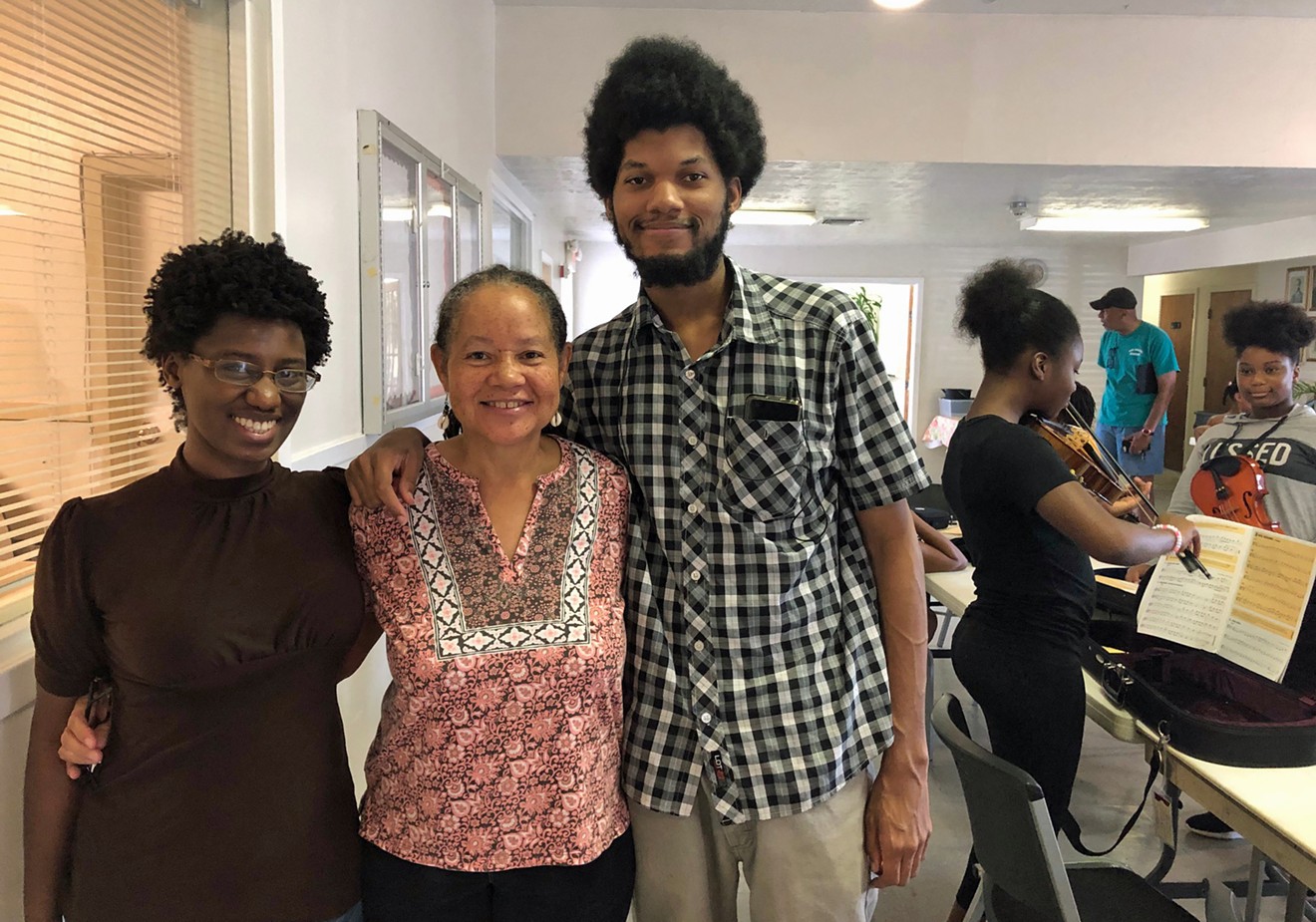
Cymphoni Pringle, Dr. Anne Lundy, and Gregory Lewis at St. Mary's United Methodist Church.
Photo by Bob Ruggiero
[
{
"name": "Related Stories / Support Us Combo",
"component": "11591218",
"insertPoint": "4",
"requiredCountToDisplay": "4"
},{
"name": "Air - Billboard - Inline Content",
"component": "11591214",
"insertPoint": "2/3",
"requiredCountToDisplay": "7"
},{
"name": "R1 - Beta - Mobile Only",
"component": "12287027",
"insertPoint": "8",
"requiredCountToDisplay": "8"
},{
"name": "Air - MediumRectangle - Inline Content - Mobile Display Size 2",
"component": "11591215",
"insertPoint": "12",
"requiredCountToDisplay": "12"
},{
"name": "Air - MediumRectangle - Inline Content - Mobile Display Size 2",
"component": "11591215",
"insertPoint": "4th",
"startingPoint": "16",
"requiredCountToDisplay": "12"
}
,{
"name": "RevContent - In Article",
"component": "12527128",
"insertPoint": "3/5",
"requiredCountToDisplay": "5"
}
]
KEEP THE HOUSTON PRESS FREE...
Since we started the Houston Press, it has been defined as the free, independent voice of Houston, and we'd like to keep it that way. With local media under siege, it's more important than ever for us to rally support behind funding our local journalism. You can help by participating in our "I Support" program, allowing us to keep offering readers access to our incisive coverage of local news, food and culture with no paywalls.
Bob Ruggiero has been writing about music, books, visual arts and entertainment for the Houston Press since 1997, with an emphasis on classic rock. He used to have an incredible and luxurious mullet in college as well. He is the author of the band biography Slippin’ Out of Darkness: The Story of WAR.
Contact:
Bob Ruggiero
Trending Music
- How Much Longer Can Classic Rock Rule the Roost?
- Top 10 Butt-Rock Bands of All Time
- Wang Chung Headline a Musical Time Trip to the '80s...and Land on the Moon!
-
Sponsored Content From: [%sponsoredBy%]
[%title%]

Don't Miss Out
SIGN UP for the latest
Music
news, free stuff and more!
Become a member to support the independent voice of Houston
and help keep the future of the Houston Press FREE
Use of this website constitutes acceptance of our
terms of use,
our cookies policy, and our
privacy policy
The Houston Press may earn a portion of sales from products & services purchased through links on our site from our
affiliate partners.
©2024
Houston Press, LP. All rights reserved.

